Even if you don’t have a strobe or off camera lighting unit, you can make portraits with dramatic lighting. All you need is some natural light and a reflector. A reflector can be just as effective as a strobe and all the accessories that you can use with one. All the portraits in this article were made with sunlight and one medium size reflector.
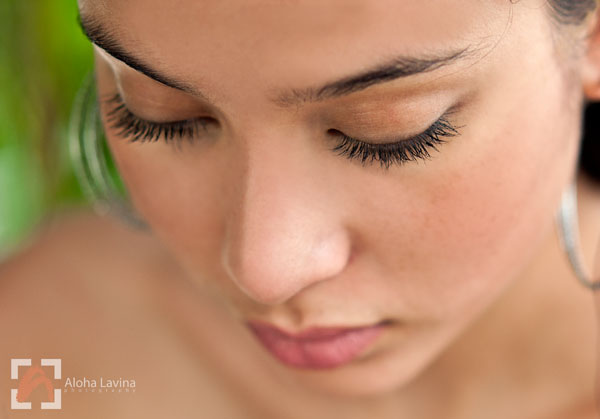
The reflector was placed below Chloe's face to fill in the shadows. Copyright Aloha Lavina.
When I made this close up of Chloe’s face, what I wanted was a very shallow depth of field so that only her lashes would be sharp. But it was midmorning in Bangkok, which means the light was already harsh. So I had to diffuse the light a little by asking Chloe to stand under some kind of shelter—in this case, there was a tree in the field where we did the shoot, and beyond the tree was a patch of green.
The green worked well for the soft background, and having the tree over the model meant that I could open up the lens to an aperture of f/1.4 and still get a good exposure. To soften the shadows and give the portrait a bright, cheerful feeling, I placed the silver side of the reflector underneath Chloe’s face.
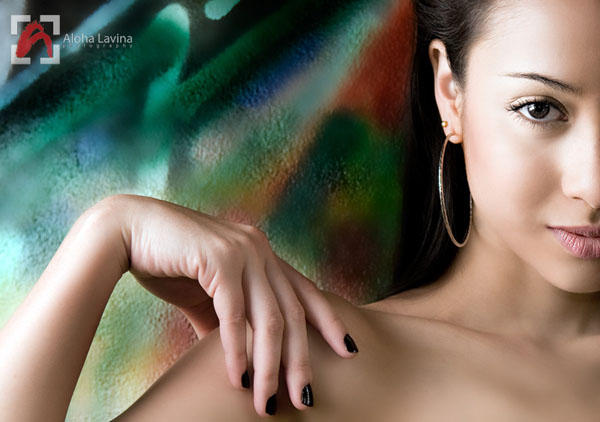
A reflector can soften shadows. Copyright Aloha Lavina.
The second portrait of Chloe was done with a window camera left; we were in a broken building with the North facing wall completely crumbled, leaving us with soft light, even at 11 am. The window light gave me a beautiful side light, but the bright light also made some pretty dark shadows to Chloe’s right.
I placed the reflector with the gold side on camera right and filled in the dark shadows. You can see in the ‘shadowed’ part of her face that the shadow is very light, but was still there; this is what gives the face contour and shape.
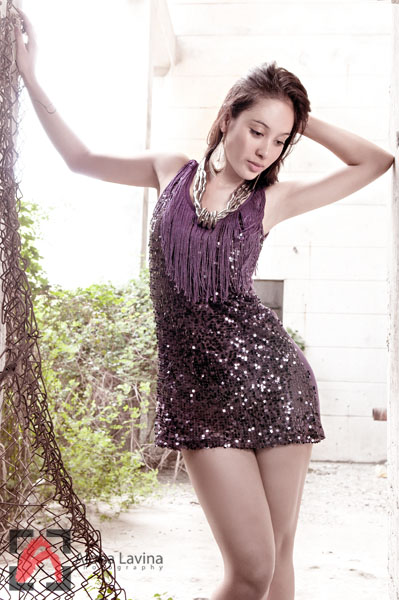
A high key image with backlight and a reflector to fill in deep shadows, with exposure compensation. Copyright Aloha Lavina.
In this portrait, I wanted to see if the reflector could give enough light in a situation where the light from behind the subject was extremely bright. It was already midday, so to get the camera to capture Chloe with the extreme bright light outside, I had to use exposure compensation to make a high-key portrait. Dialing up almost two stops toward overexposure made the light behind Chloe so white, and I’ve lost detail in the background.
I shot the image at f/8, and made sure I got enough light on Chloe by placing the silver side of the reflector below camera right. The light from outside bounced off the reflector onto Chloe; that’s why there’s hardly any shadow on her. A bonus was that the reflected light off the silver reflector bounced off some sequins on her dress and created a nice visual texture.
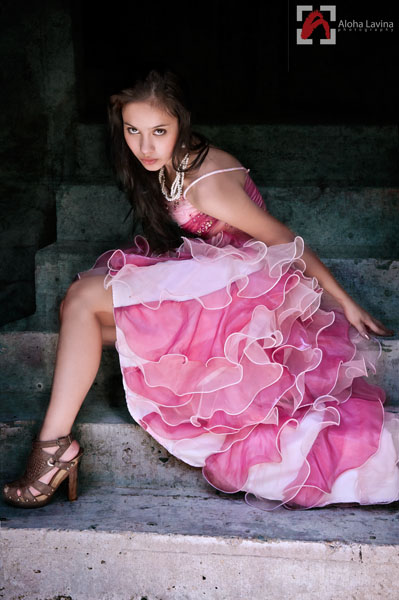
The reflector was flat on the ground in front of Chloe.
We tried one more portrait with the bright midday light outside, in a pink dress. The abandoned building we were in had these stairs that led to nowhere, and doorless frames leading to the outside. I had Chloe sit on one of these steps, framed by a doorway. The sun was high overhead; the bare concrete reflected a lot of light, but not quite enough to light Chloe’s face.
I stood outside the door frame, with the reflector placed flat on the ground in front of me. What this did was to reflect the light from overhead onto the silver side of the reflector, and bounced it to Chloe’s face. I also got some nice catchlights in her eyes. After the pink dress shot, it was way too bright to shoot outside, so we moved indoors.
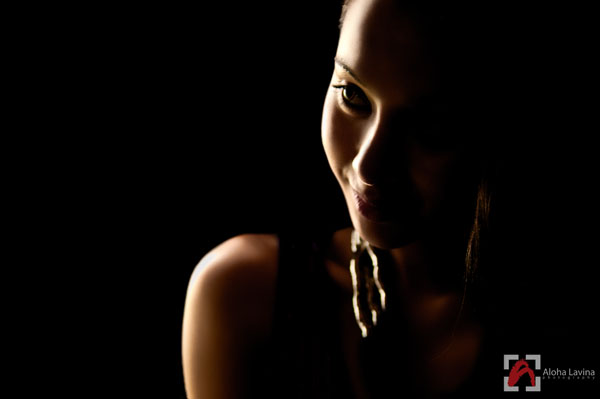
The gold reflector helped me make this chiaroscuro. Copyright Aloha Lavina
The building had these unfinished windows, long slits in the slabs of concrete. I decided to use one of those to create a graphic portrait – one that used chiaroscuro, a technique where the shadows and highlights are of equal intensity and value. To get the golden hue in Chloe’s skin, I placed the gold reflector outside one of the windows, 45 degrees to the wall. (I propped it up with my roller camera bag.) Then on the other side of the wall where Chloe was, I asked her to stand with the golden light to her side.
What resulted was this portrait that uses negative space in a dramatic way. I love how Chloe’s right eye has a catchlight, as she half-turns toward the light. Note that the light is a little hard; reflectors work just like strobes or off camera flash: the closer the light the softer it is, and the farther it is, the harder it looks.
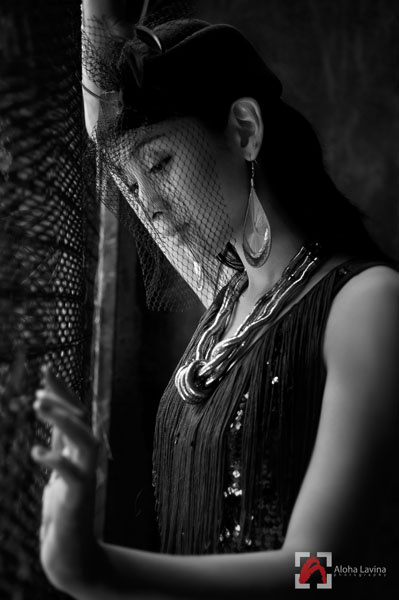
The reflector intensified the light filtered through foliage. Copyright Aloha Lavina.
Continuing with the indoor experiments, I asked Chloe to pose beside a bigger window covered with wire mesh. The outside of the mesh was overgrown with vines and other wild plants; the building had been abandoned for more than a decade. The problem was, the light barely filtered through to light Chloe’s face.
To add more strength to the sunlight filtering through the wild foliage, I placed a reflector in the midst of all the vines and wild leaves, the various branches acting as little arms to hold the light reflector up. This time, I used the mixed silver and gold side of the reflector, to give the ‘spotlight’ I was creating a natural intensity and color. I prepared the image in black and white because the color didn’t add anything to the portrait and merely distracted. In black and white, the texture of the net on Chloe’s hat is accentuated as it reflects the texture of the wire mesh of the window.
As the sun grew hotter outside, Chloe and I moved deeper into the abandoned building and found a room which had a small window and not much else of a light source. I wanted this portrait to have a completely dark background, and for the light on Chloe’s face to be soft. I placed Chloe beside the small window, to create my favorite side lighting. But I also had to fill in the very dark shadows with just a punch of light to her face. What I did was to clip the reflector with the silver side toward her face, on the handle of my camera bag, making sure it was below Chloe’s chin, but angled up at an obtuse angle to the window, so that it was reflecting some light onto her face. The silver light punched through just a tad to light Chloe’s face, I told her to look startled, and the portrait was done.
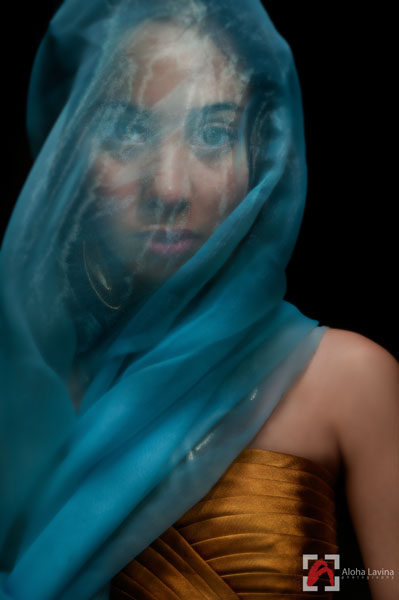
A small window and a reflector made this dramatic lighting. Copyright Aloha Lavina.
If you’re just starting out with lighting portraits, I suggest using a reflector with natural light. The learning curve is steep; natural light is unpredictable and constantly changing. If you solve lighting problems using just a reflector, you begin to quickly understand how a light can fill shadows, provide detail, and make a portrait pop.





18 Comments
Beautiful demonstration; inspiring. Will definitely begin my own experimenting. Tweet @GaiaImages1
Very informative, inspiring and wonderful portraits!
Exquisite portraiture as always, Aloha. Extremely informative as well…as always.
Very interesting, it is something that would be cool to try on a larger scale, like a landscape scene.
Super article, very informative and great captures – Thank You!
img]https://lightstalking.com/wp-content/uploads/2011/08/ADL_4039.jpg
Great shots! Informative. Will use some of these techniques for shoot this weekend!
Inventive inspiring and captures mood and emotion. well done!
Excellent article and really beautifully put together shots – thanks!
Very interesting tips. Very well written and easy to understand. Thanks.
I have only Thanks for your good task.
thank you very much for those excellent tips. right away, I borrowed a reflector from my friend to try them out. we’ll see how it works out 🙂
This is one of the most useful reading on photography for novice enthusiasts like me. Thanks and encore.
Hats off to the photographer of these images. Absolutely gorgeous work, with just a single reflector.
Can’t believe these shots can be achieved with natural light and a reflector – thank you for sharing; a brilliant thing for someone just starting out to learn and beats spending a fortune on flashes!
Oh thank you so much for this post. I am legally blind and after my last shoot with a reflector I have lost my confidence in using them. I think that perhaps my limited vision is affecting my ability to find the situations with reflectors. However, your detailed description of set ups is really helpful and I’m keen to try use the reflector again. Thank you.
Thanks for the very useful tips! I will have to try these on my next assignment.
I’ve some experimenting to do now
Great article! Thank you for writing, and sharing 🙂